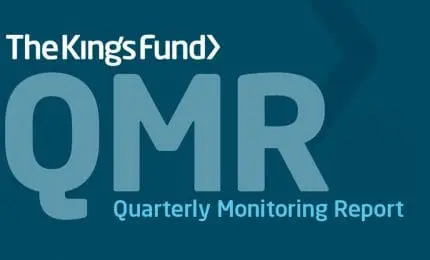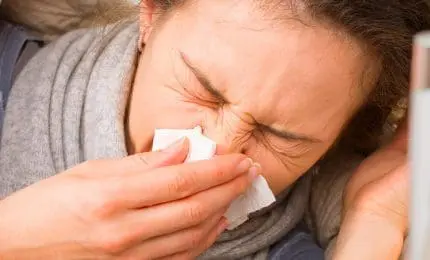As we approach the winter months, the walls of GP surgeries and hospitals across the country are covered with posters calling for people to have the flu jab as the NHS prepares for the unpredictability of seasonal influenza.
A deadly season in the southern hemisphere
This year reports of one of the deadliest flu seasons in more than 10 years in Australia have made headlines in the British press.
“At least 170,000 influenza cases have been confirmed this season, almost two-and-a-half times more than in 2016.” (Fighting the flu can be a matter of life and death – so what more can we do? The Guardian)
Here in the UK, the Department of Health and Public Health England advise, “All those eligible should be given flu vaccination as soon as vaccine is available so that people are protected when flu begins to circulate. Vaccination should therefore be completed by the end of December before flu circulation usually peaks.” (www.gov.uk)
At risk from the flu?
In the UK, those people particularly at risk of seasonal influenza include people over 65, pregnant women, people with certain medical conditions, people living in a long-stay residential care home or other long-stay care facility and people who receive a carer’s allowance, or who are the main carer for an elderly or disabled person whose welfare may be at risk if they fall ill.
The Guardian reports, “The NHS is expanding its £237m winter flu campaign by offering free vaccination for the first time to over 1 million people who work in care homes, at a cost of £10m, and also to the 670,000 eight- and nine-year-old pupils in school year four. Those aged two, three and four will be offered a flu vaccination in the form of a nasal spray rather than an injection, however.
In all, 21 million people in England will be offered free immunisation on the NHS. They include pregnant women and anyone over 65 and anyone deemed at clinical risk, for example due to asthma.” The Guardian
According to The King’s Fund overview “The national NHS bodies have also put considerable emphasis on preparing for winter, with winter planning guidance issued in July and funding made available to offer flu jabs for care home staff.” This, in an effort to “free up hospital bed capacity, improve A&E waiting times and relieve some of the financial pressures on commissioners.”
Efforts to prevent avoidable wastage of vaccine
In addition, it is envisaged that the ordering controls introduced in 2016 on centrally purchased flu vaccines will remain in place in 2017/18. The controls were introduced to cut the amount of excess live attenuated influenza vaccine (LAIV), or Fluenz Tetra, that was ordered across England but not administered to children. Updates are available in the government’s Vaccine Update.
The government’s General Principles on ordering the LAIV include guidelines to “Order small amounts weekly and receive weekly deliveries”, “Be realistic about the amount of flu vaccine that you expect to need” and warns that “local stockpiling can cause delays or restrictions on stock being released to the NHS, and increases the risk of significant loss of stock” in the event of cold chain failure.
Inactivated flu vaccines, procured by PHE for children for whom LAIV is contraindicated, are also subject to ordering controls.
Efforts to secure supply
The government writes, “Manufacture of influenza vaccines is complex and conducted to a tight schedule, constrained by the period between the announcement of the WHO recommendations and the opportunity to vaccinate before the influenza season. Manufacturers may not be able to respond to unexpected demands for vaccine at short notice.” (www.gov.uk)
To this end, the Department of Health and Public Health England write, “It is recommended that orders are placed with more than one manufacturer in case of supplier delays or difficulties in the manufacture or delivery of the vaccine.” (NHS)
Viral drift and vaccination changes
The viruses that cause flu change every year as a result of viral drift and shifts (CDC). To keep up with these changes, the viruses that are most likely to cause flu are identified by the WHO in advance and vaccines are made to match them as closely as possible.
This year has seen a shift in the A(H1N1)pdm09 virus, which has been updated compared to the virus recommended for northern hemisphere 2016-2017 influenza season. (An A/Michigan/45/2015 (H1N1)pdm09-like virus replaces the A/California/7/2009 (H1N1)pdm09-like virus used in the 2016-2017 influenza season). The WHO notes that the recommendations this year are the same as those made for the 2017 southern hemisphere influenza vaccine (WHO).
Flu kills
Public Health England has estimated that an average 8,000 people die from flu in England each year. Some years that figure reaches 14,000. That’s more than eight times the number of confirmed cases of measles (91), mumps (717) and rubella (5) combined in 2015. (http://www.nhsemployers.org/flumatters)
More vaccinations, fewer infections
The flu virus changes every year and so, to stay protected, people need to be vaccinated every year. Professor Dame Sally Davies, Chief Medical Officer England, writing in a report to boost flu vaccination and manage the pressures of winter on the NHS said, “The harsh reality is that flu can kill and the best way to protect yourself is to get the jab. With more people eligible than ever before and the vaccine available in more locations, people should protect themselves and those around them from flu. Taking a few minutes to get the jab could save your life this winter.” (NHS)
#flu #flujab #vaccine #fluvaccine

















